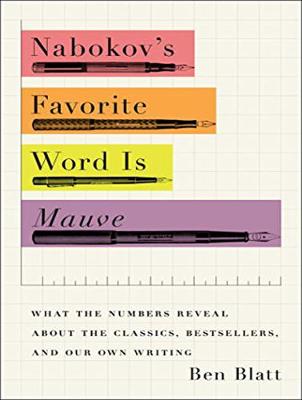Reviewed by Briana @ Pages Unbound on
The book is divided into different topics, and I admit some are more interesting than others. I particularly enjoyed the first chapter, "Use Sparingly," where Blatt investigates whether the old writing advice "use -ly adverbs minimally" is "good" advice. (Of course that will always be somewhat subjective, but he takes a look at classic authors, generally deemed "good" authors, to see see if they tend to follow this rule. Frequently he analyzes fan fiction to get a sense of how more amateur writing compares.) His conclusions on this and similar writing advice questions can be useful to writers looking to improve their own work. I also had fun watching Blatt analyze whether authors follow their own writing advice, or whether they're full of hot air.
Blatt also delves into issues of co-authorship, such as: Can you tell who wrote "most" of the book that has two author names on the cover? (Or just one name, with an uncredited ghost writer?) And he addresses questions of readership, such as whether the books on the new York Times Bestseller list are getting less complex. (Spoiler: They are.) Blatt covers an interesting array of topics, leaving much of the analysis open to the reader. (Does it even matter that todya's bestsellers are written at a lower grade level than in previous decades?)
My least favorite chapter was "How to Judge a Book by Its Cover." While a lot of Blatt's points are fascinating, occasionally he stumbles onto the obvious, and that was the most true in this chapter. He takes pages just to point out that the more famous you are as an author, the bigger your name tends to be on the cover of your books. Well...duh. Of course, he attaches numbers to the issue (What percentage of the cover does your name take up? What's the largest your name is ever likely to be?), but overall I didn't think the issue was worth going on about.
This is a fascinating book. From here, I think the only real questions are what we, as readers, will do with the information Blatt provides. Highly recommended (particularly for those of you looking to read more nonfiction! It's a book about books!).
Reading updates
- Started reading
- 26 March, 2017: Finished reading
- 26 March, 2017: Reviewed
